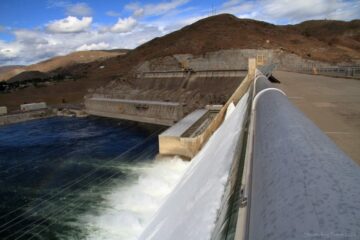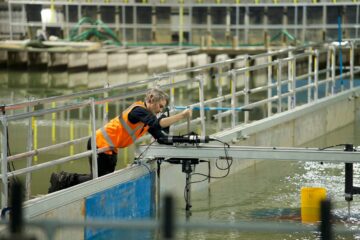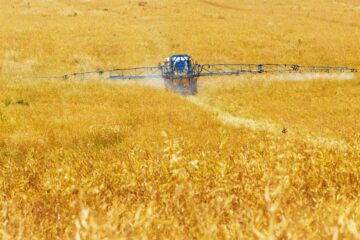
Held up as an exemplar of the powerful role citizen scientists can play in finding solutions to complex environmental problems, a team of researchers is calling attention to a seemingly groundbreaking report on the sources of marine pollution.
In what’s said to be the first study of its kind, a team of researchers identified socioeconomic and geographic factors related to coastal and seafloor pollution, drawing on a sweeping data set obtained from the Ocean Conservancy’s International Coastal Cleanup and the PADI AWARE Foundation™’s Dive Against Debris® programs to .
“This research could not have been done without the information collected by hundreds of thousands of citizen scientists conducting tens of thousands of cleanups world-wide,” said Dr. Denise Hardesty, a Senior Research Scientist at CSIRO, Australia’s National Science agency and a leader on the study.
The findings provide some of the most detailed information available on sources and patterns of pollution in scores of countries around the world, and could inform strategies to protect marine life and habitats from pollution — a critical tool at a time when the ocean faces unprecedented pressures from climate change, overfishing, and other threats.
“Hotspots of plastic pollution also reflect the patterns of local deposition, waste management and accumulation,” Hardesty continued. “By identifying these locations using real data, local decision makers can assess opportunities on where and how to implement effective policies to reduce plastic in the environment.”
The research also upends some of the conventional wisdom on pollution. Contrary to a prevailing view that plastic pollution is largely a problem for the Global South, it found plastic pollution hotspots exist globally and in a wide variety of socioeconomic contexts.
The analysis used comprehensive data obtained from 22,508 land-based cleanups as part of Ocean Conservancy’s International Coastal Cleanup across 118 countries (2011-2017) and 7,290 seafloor cleanups conducted through the PADI AWARE Foundation’s Dive Against Debris program in 116 countries (2011-2018).
Key findings
- The 10 most abundant items on land (in order ranked 1-10) included cigarette butts, food wrappers, plastic beverage bottles, plastic bottle caps, plastic bags, plastic straws, plastic take-away containers, plastic lids, and foam take-away containers and plastic pieces (fragments).
- The ten most common items found on the seafloor included (in order from 1-10) fishing line, plastic pieces, glass bottles, plastic beverage bottles, food wrappers, metal cans, plastic bags, fishing gear, plastic cutlery, and rope.
- Hotspots of individual litter items, such as cigarette butts or food wrappers, were differentially driven by socioeconomic factors. For example, a positive correlation between cigarette butts and national wealth was found.
- The study found that where local population increases, single use-packaging such as takeaway food and beverage containers also increases.
- Hotspots for fishing line occurred in Australia, UK and USA, where recreational fishing is a common pastime.
- Mass transit hubs, like train stations, are often hubs for single-use food and beverage packaging, but not items with recycling value.
Dr. George Leonard, Chief Scientist at Ocean Conservancy
“Given the sheer volume of single-use packaging items recorded, changing the way we use and dispose of these items will likely substantially reduce the amount of litter found on land, in our waterways, and on the bottom of the ocean. Our research highlights the need for local policies and actions targeted to reduce plastic pollution, before it gets into the environment. Our study makes a strong case that beach and underwater cleanups provide critical, complementary data about the extent of plastic pollution in the environment.”
Ian Campbell, Associate Director, Policy and Campaign for PADI AWARE FOUNDATION
“Litter that is found on land is not a reliable indicator for seafloor debris and vice versa, as different factors influence where and what types of debris are found on land and on the seafloor, although some items are common to both. We found that some seafloor debris hotspots were associated with partially landlocked seas.”
- 116
- 7
- analysis
- around
- Australia
- bags
- BEVERAGE
- Campaign
- change
- chief
- Climate change
- Common
- Containers
- content
- countries
- data
- data set
- Director
- driven
- Effective
- Environment
- environmental
- faces
- First
- food
- Gear
- George
- Global
- How
- How To
- HTTPS
- Hundreds
- image
- influence
- information
- International
- IT
- Line
- local
- management
- metal
- ocean
- opportunities
- order
- Other
- packaging
- plastic
- policies
- policy
- population
- Program
- Programs
- protect
- recycling
- reduce
- research
- Science
- scientists
- set
- Solutions
- South
- Study
- the world
- threats
- time
- transit
- Uk
- underwater
- USA
- value
- View
- volume
- Wealth
- world










